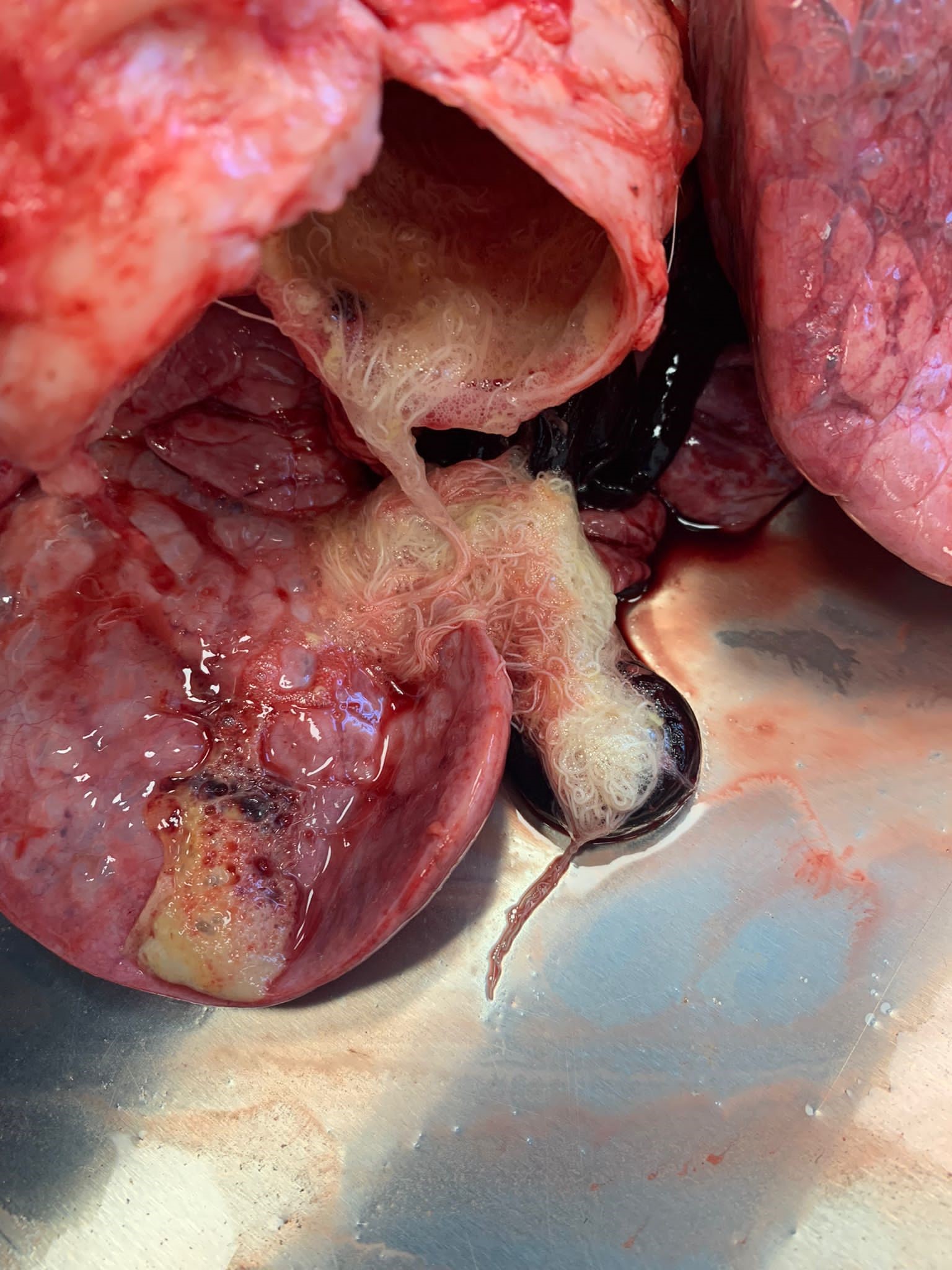Lungworm alert

Large numbers of adult lungworm in the trachea.
We have seen a few cases of lungworm in cattle in the post-mortem room this autumn, possibly precipitated by the recent rainfall that followed a rather dry summer. See photo from a recent case. We thought a review of some of the key features of lungworm in cattle would be useful.
First year grazing cattle (dairy calves, dairy cross calves and autumn born suckler calves) in late summer and autumn are at most risk, but disease can occur earlier in the year and in older animals, especially if there has been a lack of exposure to maintain immunity.
Spring-born suckler calves grazed with their dams do not usually develop clinical signs, although coughing due to a mild infection may be seen. However, typical disease may occur in weaned suckler calves if grazed until late autumn. Coughing is the typically the first sign. Some may go on to develop more significant pneumonia especially youngstock.
High summer temperatures limit larval development and survival on pasture. Wet weather as seen recently promotes the release of larvae from the faecal pat. Larvae may also spread on the spores of the Pilobolus fungus, or by mechanical means such as boots, animals’ feet and birds.
Lungworm can become patent (mature worms producing eggs) in the lungs in as little as 26 days (range is 26-60 days) post infection. Infection may persist from year to year through overwintered L3 which may survive on pasture from autumn in sufficient numbers to initiate infection the following spring. Carrier animals may also have small numbers of inhibited worms, which subsequently recommence development and can persist in the bronchi, particularly in yearlings, until the next grazing season.
Tests available at SRUC Veterinary Services for lungworm include post-mortem examinations, Baermann technique for detection of lungworm larvae in faeces, a serum antibody test, and haematology to demonstrate eosinophilia.
Posted by SRUC Veterinary Services on 11/10/2021
